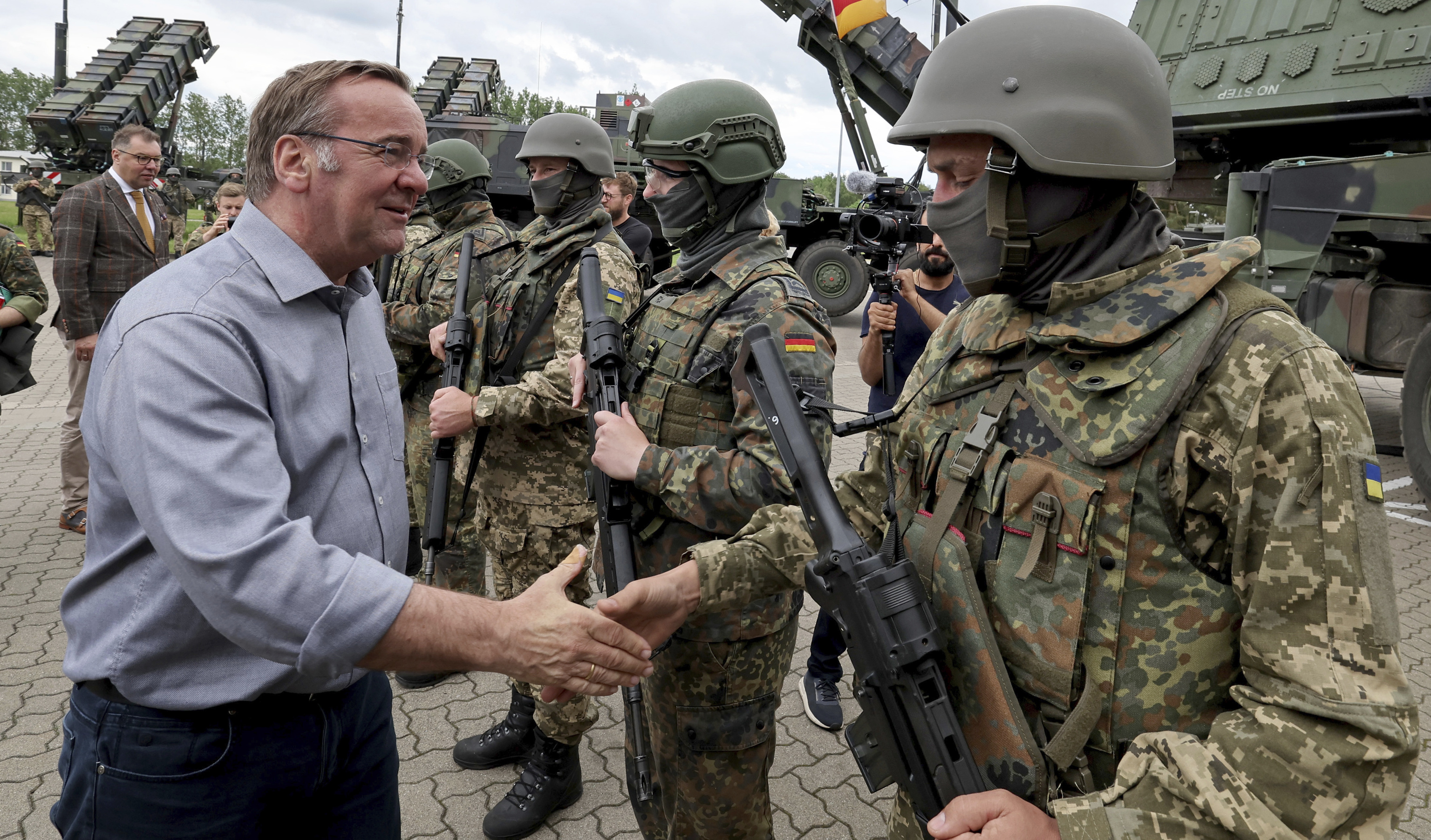Germany joined the United States on Friday in authorizing Ukraine to hit some targets on Russian soil with the long-range weapons they are supplying — a significant policy change that comes as depleted Ukrainian troops are losing ground in the war.
Ukrainian officials have expressed frustration over restrictions on the use of Western weapons — especially as the border region of Kharkiv has endured a Russian onslaught this month that has stretched Kyiv's outgunned and outmanned forces.
Both Germany and the U.S. specifically authorized the use of weapons to defend Kharkiv, whose capital city of the same name lies only 20 kilometers (12 miles) from Russia. Russian ballistic missiles slammed into an apartment building in the city overnight, Ukrainian officials said, killing at least six people.
Beyond offering Ukraine a chance of better protecting Kharkiv by targeting Russian capabilities in the region, it's not clear what effect the easing of restrictions might have on the direction of the conflict in what is proving to be a critical period. But it drew a furious response from Moscow and warnings it could draw Russia into war with NATO.
The German government said Ukraine can use weapons it supplies against positions just over the border, from where Russia launches its attacks on Kharkiv. A day earlier, U.S. President Joe Biden gave Kyiv a green light to strike back with American weapons at Russian military assets targeting the region, according to U.S. Secretary of State Antony Blinken.
Blinken said Kyiv had asked Washington for permission to use U.S.-supplied weapons against the Kremlin's troops amassing on the Russian side of the border for attacks inside Ukraine. Biden's approval was for that purpose, Blinken said at a meeting of NATO foreign ministers in Prague.
U.S. officials, who requested anonymity to discuss the sensitive matter, stressed that the U.S. policy calling on Ukraine not to use American-provided ATACMS or long-range missiles and other munitions to strike offensively inside Russia has not changed.
In response, Dmitry Medvedev, the deputy head of Russia's Security Council, said Friday that "Ukraine and its NATO allies will receive such a devastating response that the alliance won't be able to avoid entering the conflict" — an eventuality that Western governments have ruled out.
Western leaders have hesitated to ease the restrictions on their weapons because of the risk it would provoke Russian President Vladimir Putin, who has repeatedly warned that the West's direct involvement could put the world on a path to nuclear conflict. Last week, Russia said military drills involving tactical nuclear weapons had begun.
But as Russia has recently gained the battlefield initiative in some parts of the 1,000-kilometer (600-mile) front line, some Western leaders have pushed for a policy change allowing Kyiv to strike military bases inside Russia with sophisticated long-range weapons provided by its Western partners.
The Kremlin's bigger and better-equipped army is exploiting Ukrainian shortages in troops and ammunition after a lengthy delay in U.S. military aid. Western Europe's inadequate military production has also slowed crucial deliveries to Ukraine.
The German government statement noted that, in recent weeks, Russia has prepared, coordinated and carried out attacks on the Kharkiv region, in particular from areas just over the border in Russia.
"Together we are convinced that Ukraine has the right under international law to defend itself against these attacks," the statement said. "For this, it can also use the weapons delivered for that purpose in accordance with its international legal commitments, including the ones delivered by us," it added.
The question of whether to allow Ukraine to hit targets on Russian soil with Western-supplied weaponry has been a delicate issue since Moscow launched its full-scale invasion on Feb. 24, 2022.
NATO chief Jens Stoltenberg said Friday he supported lifting the limits on Ukraine's use of Western weaponry, saying it's "a matter of upholding international law — Ukraine's right to self-defense."
"Putin wanted to deter the NATO allies from supporting Ukraine. But we are not and we will not be deterred," Stoltenberg said.
Swedish Foreign Minister Tobias Billström noted that his country had not restricted Ukraine's use of its weapons at all, while Italian Foreign Minister Antonio Tajani said Rome won't let Kyiv use Italian weapons outside its territory.
In Moscow, Medvedev repeated Russian warnings that the steps being taken could set NATO and Russia on the path to a nuclear conflict. "It's not an attempt to scare or any sort of a nuclear bluff," he said.
Russia's newly appointed defense minister, Andrei Belousov, claimed Friday that Russian troops are "advancing in all tactical directions," including in the Kharkiv region where he said they have pushed Ukrainian forces back by as much as 9 kilometers (5 miles). Russian forces captured 28 towns and villages over the past month, he said.
Overall since the start of the year, Russian forces have taken control of 880 square kilometers (340 square miles) of territory, he added.
It was not possible to verify his battlefield claims.
Overnight into Friday, Russia launched five ballistic missiles at Kharkiv, Ukraine's air force said. One of them struck a residential building close to midnight and was followed by another missile 25 minutes later that hit first responders, according to regional Gov. Oleh Syniehubov.
Six people were killed, according to Syniehubov, and at least 25 were wounded.
Ukrainian officials have previously accused Russia of targeting rescue workers by hitting residential buildings with two consecutive missiles — the first one to draw emergency crews to the scene and the second one to wound or kill them. Russia used the method in Syria's civil war.
Apart from Kharkiv, Moscow's troops are pressing in the Donetsk region further south and are assembling a force for an expected attack in the Sumy region further north, according to Ukrainian officials.
Lee and Janicek reported from Prague. Associated Press writers Geir Moulson in Berlin and Ellen Knickmeyer, Aamer Madhani and Zeke Miller in Washington contributed to this report.
